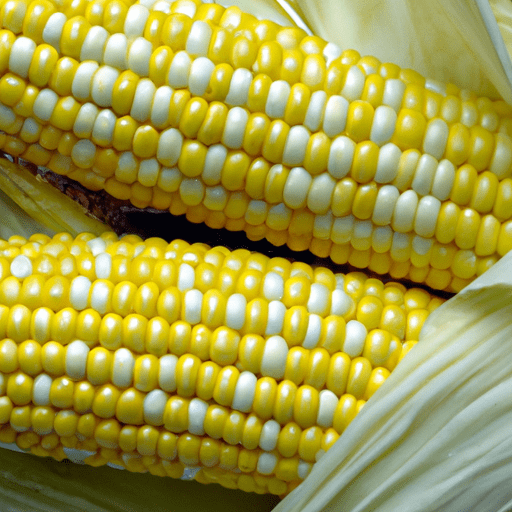The Culinary Delight: Maize
Maize, also known as corn, is a versatile and cherished culinary ingredient that has been a staple in human diets for centuries. Its unique taste, plethora of uses, impressive nutritional value, and intriguing history make it a must-try ingredient for any food enthusiast. In this article, we’ll delve into the world of maize and uncover its secrets.
A Taste Sensation
Maize boasts a delectable flavor that ranges from mildly sweet to pleasantly earthy, depending on the variety and ripeness. When cooked, it exhibits a delightful crunch and releases a burst of satisfying flavors. The taste of maize pairs exceptionally well with a variety of ingredients, making it an ideal addition to countless dishes.
Versatile Uses in Cooking
Maize offers endless culinary possibilities, lending its versatility to both savory and sweet recipes. One of the most common uses of maize is in staple dishes like tortillas, polenta, and cornbread. These dishes have become beloved classics in many culinary traditions around the world.
Apart from the classics, maize finds its way into soups, stews, salads, and even desserts. Its kernels can be grilled, boiled, steamed, or roasted and added to salsas, chowders, and casseroles. Maize flour can also be used as a thickener or to make delicious corn tortillas, which are the foundation of Mexican cuisine.
On the sweeter side, maize stars in delightful creations such as corn pudding, corn ice cream, and even corn brûlée. Its subtle sweetness provides a unique twist to traditional desserts and leaves you craving more.
Nutritional Goodness
Beyond its delicious taste and culinary applications, maize offers an impressive array of nutrients. It is a rich source of fiber, which aids digestion and helps maintain a healthy digestive system. Maize is also packed with essential minerals like magnesium, phosphorus, and manganese.
Moreover, maize is a surprising source of antioxidants, including carotenoids. These powerful compounds are known for their role in boosting immune health and reducing the risk of chronic diseases. So go ahead and enjoy maize guilt-free — it’s not only delicious but also nutritious!
Unveiling Maize’s History and Fun Facts
Maize has a fascinating history that dates back thousands of years. It is believed to have originated in Mesoamerica, where it was cultivated as early as 10,000 years ago. Native American tribes, such as the Mayans and Aztecs, revered maize as a sacred crop and considered it a gift from the gods.
The colonization of the Americas in the 15th century led to the introduction of maize to the rest of the world. Its cultivation quickly spread, and maize became a vital food source for many cultures.
Here are some intriguing facts about maize:
- Maize comes in a wide range of colors, including white, yellow, blue, red, and even black.
- There are over 2,500 different varieties of maize, each with its unique characteristics and culinary uses.
- Corn silk, the fine threads that surround the kernels, has traditionally been used in herbal medicine for its diuretic qualities.
Embrace the Cornucopia of Flavors
Maize captures the essence of culinary diversity with its remarkable taste, numerous cooking applications, and a rich history that transcends borders. Whether you savor a warm tortilla, relish a spoonful of creamy corn pudding, or add sweet corn to your favorite salad, maize invites you on an exciting culinary adventure.
So, don’t be shy — embrace the cornucopia of flavors that maize brings to your table. With its exceptional taste, versatility, and nutritional benefits, maize is truly a culinary delight that deserves a special place in your kitchen repertoire.
Maize
Origin: Maize, also known as corn, has its origins in Mesoamerica. It was first domesticated by indigenous peoples in southern Mexico around 9,000 years ago. Maize cultivation subsequently spread throughout the Americas.
Common Uses: Maize is highly versatile and is used in a variety of ways. It can be consumed fresh as a vegetable, dried and ground into cornmeal or flour, or processed into products like corn starch, corn syrup, and corn oil. Maize is a primary ingredient in many staple foods, such as tortillas, cornbread, and polenta.
Nutritional Benefits: Maize is a rich source of carbohydrates and dietary fiber. It also contains essential vitamins like vitamin C, thiamine (vitamin B1), and folate (vitamin B9). Additionally, it provides minerals such as magnesium and phosphorus. However, it is important to note that the nutritional composition of maize can vary depending on factors such as variety and cooking methods.
Unique Properties: One remarkable property of maize is its genetic diversity. There are thousands of maize varieties, ranging in color, size, and texture. This diversity allows for the creation of different types of corn products and the adaptation of maize to various climates and growing conditions.
Historical Significance: Maize played a significant role in the development of civilizations in the Americas. It was a staple crop for ancient cultures such as the Mayans, Aztecs, and Incas. Maize cultivation not only provided sustenance but also formed the basis of their economies and cultural traditions. Today, maize remains an important crop worldwide, both for sustenance and economic purposes.




Use the share button below if you liked it.
It makes me smile, when I see it.